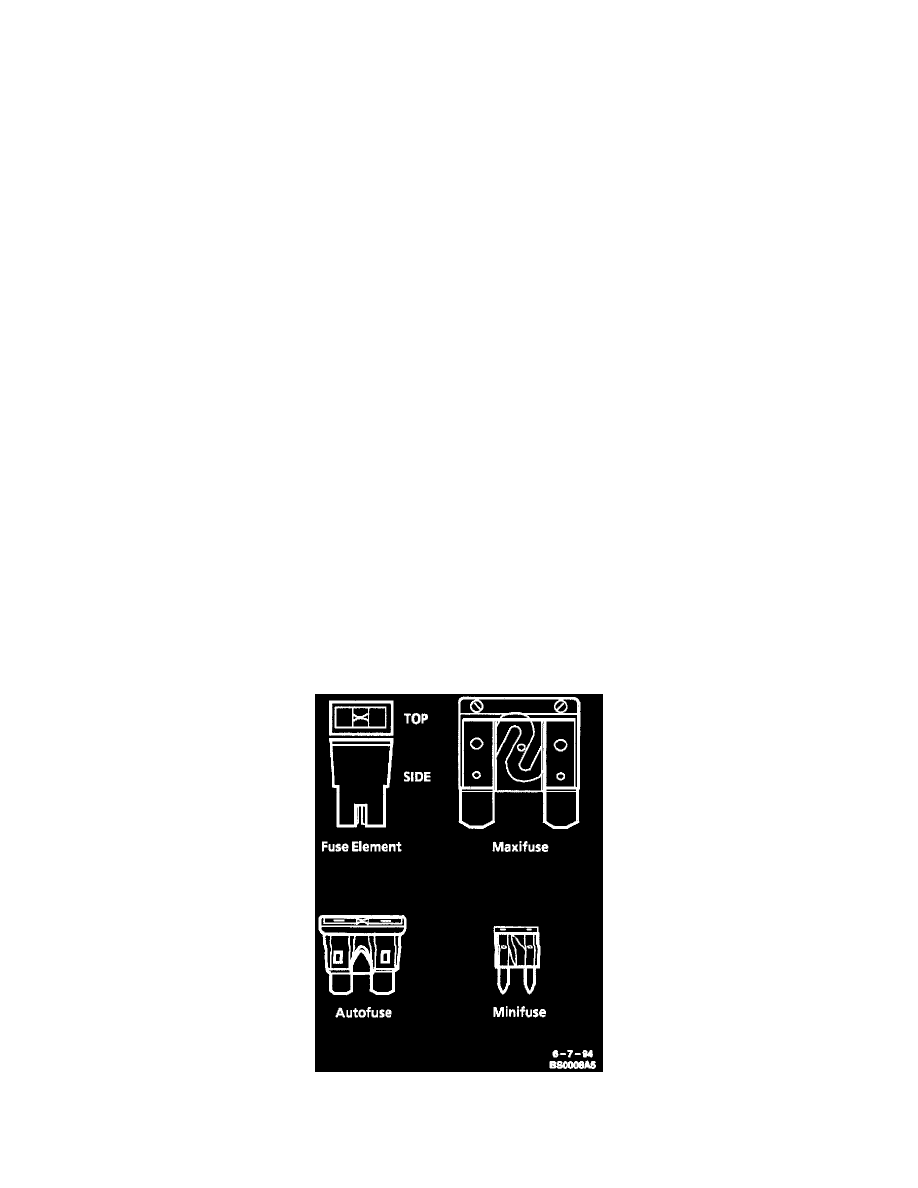Tahoe 4WD V8-393 6.5L DSL Turbo VIN S (1995)

Cruise Control Servo: Diagnostic Aids
General Information
The purpose of circuit protection is to protect the wiring assembly during normal and overload conditions. An overload is defined as a current
requirement that is higher than normal. This overload could be caused by a short circuit or system malfunction. The short circuit could be the result of a
pinched or cut wire or an internal device short circuit, such as an electronic module failure.
The circuit protection device is only applied to protect the wiring assembly, and not the electrical load at the end of the assembly. For example, if an
electronic component short circuits, the circuit protection device will assure a minimal amount of damage to the wiring assembly. However, it will not
necessarily prevent damage to the component.
There are three basic types of circuit protection devices: Circuit Breaker, Fuse and Fusible Link.
Circuit Breakers
A circuit breaker is a protective device designed to open the circuit when a current load is in excess of rated breaker capacity. If there is a short or other
type of overload condition in the circuit, the excessive current will open the circuit between the circuit breaker terminals. There are two basic types of
circuit breakers used in GM vehicles: cycling and non-cycling.
Cycling Circuit Breaker
The cycling breaker will open due to heat generated when excessive current passes through it for a period of time. Once the circuit breaker cools,
it will close again after a few seconds. If the cause of the HI current is still present it will open again. It will continue to cycle open and closed until
the condition causing the HI current is removed.
Non-Cycling Circuit Breaker
There are two types of non-cycling circuit breakers. One type is mechanical and is nearly the same as a cycling breaker. The difference is a small
heater wire within the non-cycling circuit breaker. This wire provides enough heat to keep the bimetallic element open until the current source is
removed.
The other type is solid state, called out in this section as Electronic Circuit Breaker (ECB). This device has a Positive Temperature Coefficient. It
increases its resistance greatly when excessive current passes through it. The excessive current heats the ECB. As it heats, its resistance increases,
therefore having a Positive Temperature Coefficient. Eventually the resistance gets so HI that the circuit is effectively open. The ECB will not
reset until the circuit is opened, removing voltage from its terminals. Once voltage is removed, the circuit breaker will re-close within a second or
two.
Fuses
Fuse Devices
The most common method of automotive wiring circuit protection is the fuse. A fuse is a device that, by the melting of its element, opens an electrical
